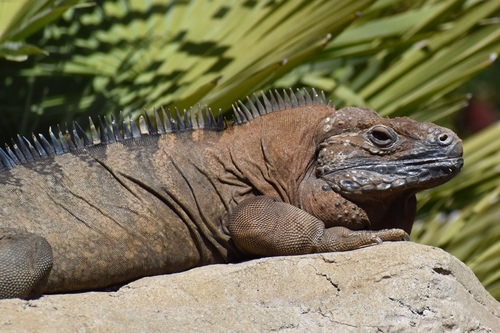
Jamaican Iguana
Cyclura collei, the Jamaican iguana, is a striking reptile with gray-blue scales and a dorsal crest. Endemic to Jamaica's limestone forests, it aids in seed dispersal, promoting forest growth. This herbivore's conservation highlights its ecological importance and unique island adaptation.
20 years
Lifespan
1.996 kg
Weight
Length: 38 - 43 cm
Size
Brown, Yellow, Blue, Green, Olive
Color
3-7 years
Age of Sexual Maturity
Low
Aggression
Critically Endangered
Conservation Status
Increasing
Population Trend
Characteristics
The Jamaican iguana, scientifically known as Cyclura collei, is a large, herbivorous lizard endemic to Jamaica. It features a robust body, grayish-blue scales, and a prominent dorsal crest. Known for its rocky limestone forest habitat, it plays a crucial role in seed dispersal, aiding forest regeneration.
Distribution Range of the Jamaican Iguana
Cyclura collei, commonly known as the Jamaican iguana, is native to Jamaica. It is predominantly found in the Hellshire Hills region, located on the southern coast of the island.
Jamaican Iguana's Habitat
Environmental Conditions
The Jamaican iguana inhabits dry tropical forests characterized by limestone outcrops and dense vegetation. The climate in this region is typically warm and humid, with distinct wet and dry seasons. The area receives moderate rainfall, which supports the growth of a variety of plant species that the iguana relies on for food and shelter.
Ecological Niche
The Jamaican iguana is primarily herbivorous, feeding on leaves, fruits, and flowers of native plant species. It plays a crucial role in seed dispersal within its ecosystem. The iguana is also known to occupy burrows or crevices in the limestone, which provide protection from predators and extreme weather conditions. This species is a keystone species within its habitat, influencing the structure and function of the ecosystem.
Copyright @ Nature Style Limited. All Rights Reserved.
 English
English